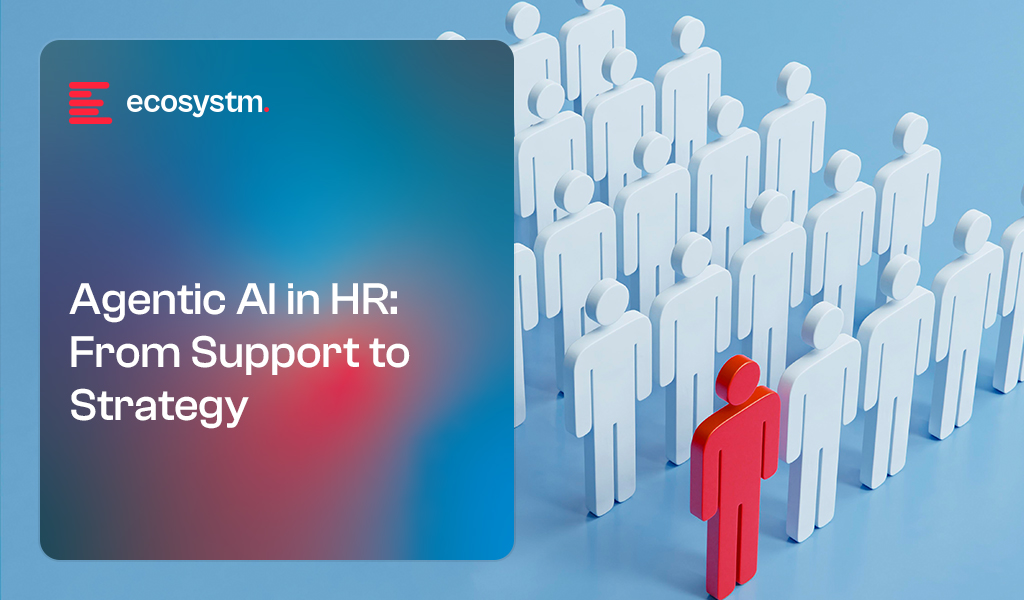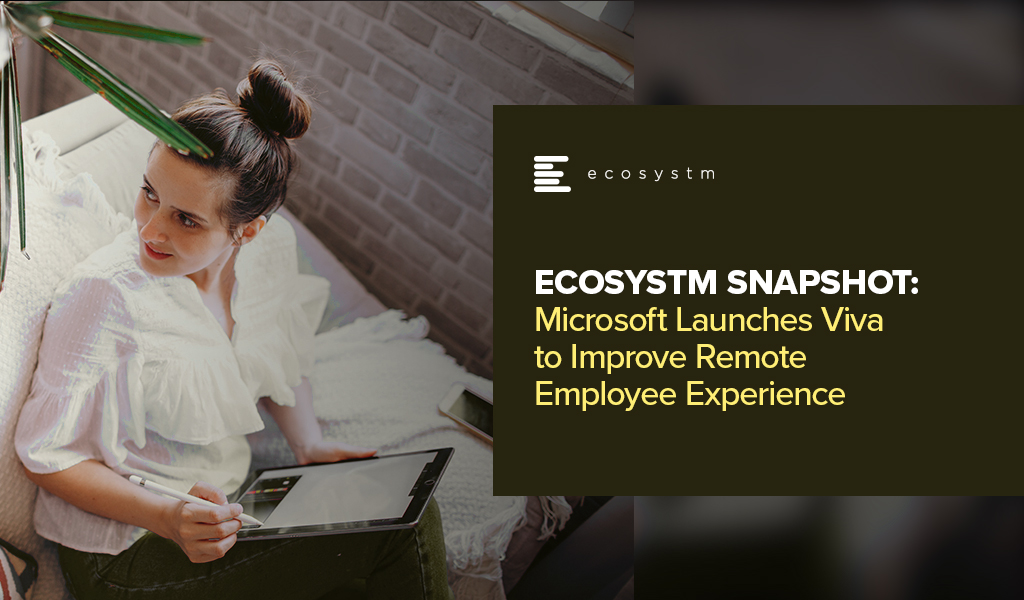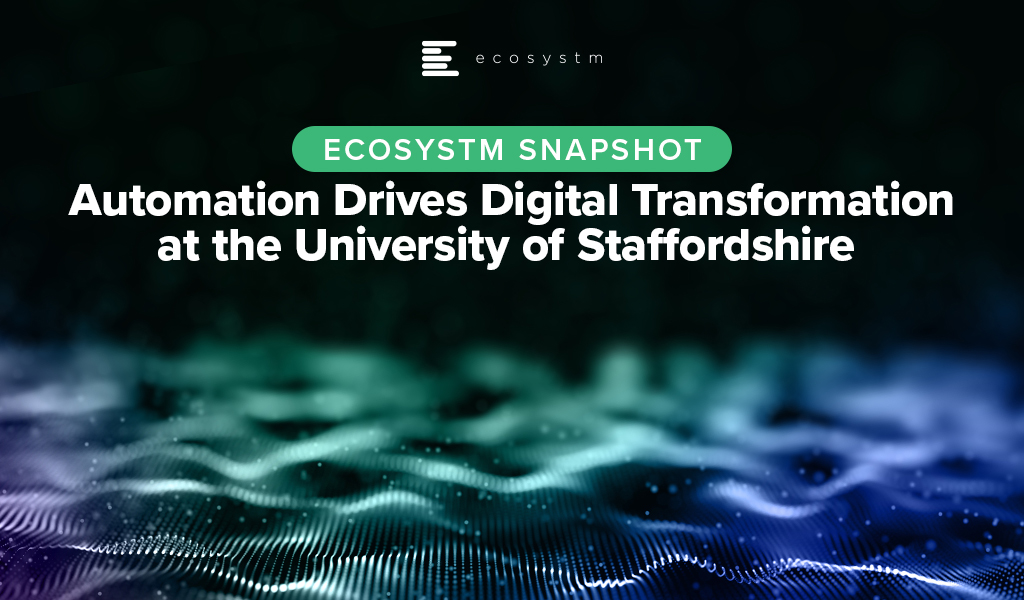HR has often been positioned as a support function, called in to manage policies, resolve issues, or guide change already in motion. But as organisations become more distributed, dynamic, and employee expectations grow, that reactive model falls short. HR today is expected to shape culture, influence strategy, and stay embedded in the day-to-day experience of work.
GenAI has already started to change how HR teams work, speeding up tasks like drafting policies, analysing engagement data, and generating learning content. But to go further, HR needs systems that can sense what’s happening in real time, respond with context, and act proactively. That’s where Agentic AI comes in. It goes beyond assistance to autonomous action – routing queries, flagging risks, triggering nudges, or coordinating tasks across systems.
Together, GenAI and Agentic AI are shifting HR from supporting decisions to actively shaping them, and doing so at scale.
Scaling HR Impact with GenAI and Agentic AI
GenAI is changing how HR teams operate – accelerating everyday tasks like reviewing CVs, drafting job descriptions, or analysing employee performance reviews. It supports the creation of tailored policies, improves the quality and consistency of outreach, and helps surface insights from unstructured data. It also enables more targeted interview preparation and personalised learning journeys.
These capabilities have helped HR move towards a more responsive, employee-focused model. But GenAI still works within the limits of the prompts it receives. It enhances productivity, not decision-making. Agentic AI builds on this by introducing autonomous action – planning, adapting, and executing tasks in real time to support evolving workforce needs more intelligently and at scale.
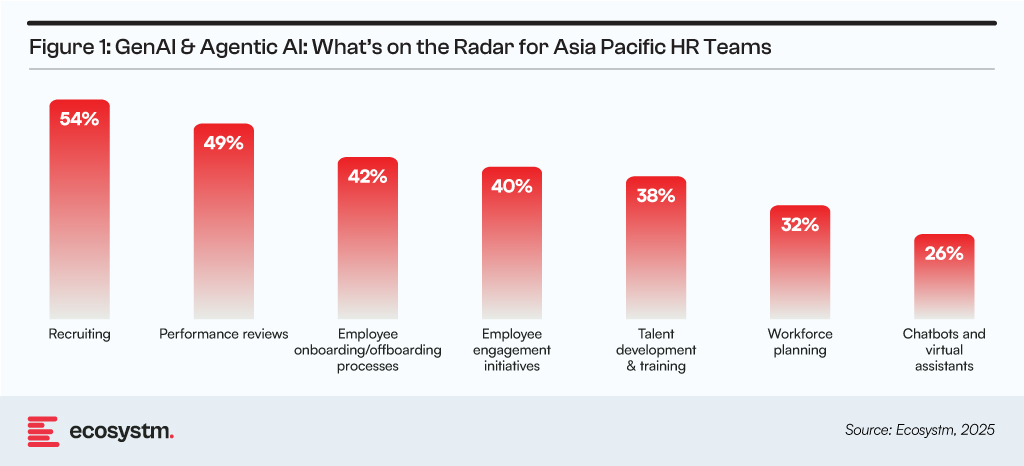
Leading Use Cases of Agentic AI in HR
Agentic AI is redefining how HR operates; not by replacing people, but by giving teams a responsive, intelligent system that works behind the scenes to personalise, prioritise, and act. These capabilities help HR teams move from static workflows to living, adaptive systems that support employees in real time.
Onboarding Orchestration. Agentic AI coordinates onboarding journeys dynamically – scheduling meetings, nudging mentors, tracking task completion, and adapting the flow based on real-time feedback. If a new hire flags confusion or drops off mid-process, the system adjusts instantly, resends steps, or escalates support. The result is a personalised, seamless experience that sets the tone for inclusion and engagement from day one.
Attrition Prediction and Retention Planning. By monitoring signals like reduced engagement, sudden PTO, or changes in team behaviour, Agentic AI can identify at-risk employees before they resign. It then suggests targeted retention strategies based on context, such as recognition nudges, growth conversations, or team adjustments, allowing HR to intervene early and with precision.
HR Service Delivery at Scale. Agentic AI answers common employee queries about leave balances, policies, and benefits immediately and accurately, across channels like Slack or email. It reduces wait times, lowers HR workload, and ensures employees get consistent, policy-aligned answers. Complex or sensitive cases are routed to the right human stakeholder with full context for faster resolution.
Organisational Health Monitoring. Sentiment doesn’t live in surveys alone. Agentic AI aggregates data from exit interviews, Slack threads, survey responses, and internal communications to identify patterns – burnout risk, morale dips, misalignment – and surface them as real-time dashboards. This gives leaders continuous visibility into cultural health and the opportunity to act before small issues escalate.
When GenAI and Agentic AI Work Together, HR Moves Faster – and Smarter
The real power of AI in HR lies not in isolated tools but in the synergy between two complementary capabilities. GenAI provides content intelligence, efficiently drafting, summarising, and personalising at scale. Agentic AI adds a layer of orchestration, reasoning, planning, and acting in real time. Together, they move beyond simple task automation to fundamentally reshape how HR thinks, responds, and leads, turning reactive processes into predictive insights, shifting HR’s role from support to strategic partner, and transforming manual work into more meaningful, human-centred action.
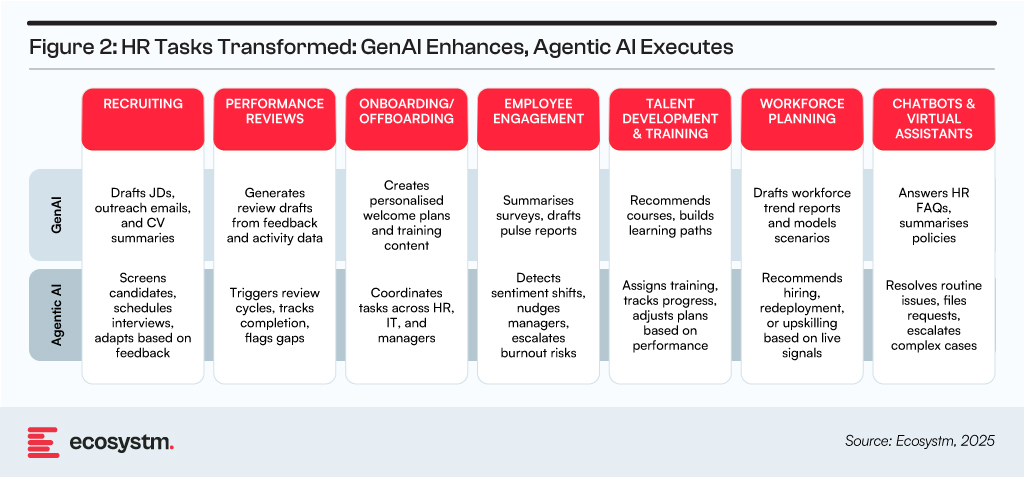
Beyond Tasks: AI as a System-Level Enabler
While the figure highlights clear task-level gains, GenAI and Agentic AI also enable more advanced HR capabilities:
Workforce Modelling and Headcount Planning. Agentic AI evaluates business priorities, project demands, and team capacity to recommend hiring, restructuring, or upskilling strategies. GenAI supports this by synthesising these insights into clear headcount proposals, role rationales, and scenario narratives for leadership decision-making.
Policy Testing and Scenario Simulation. Whether trialling a hybrid work policy or reworking bonus schemes, Agentic AI can model their downstream effects on retention, productivity, and morale. GenAI helps HR teams communicate these implications through simulation reports and change briefings that bring potential outcomes to life.
Culture Mapping and Sentiment Analysis. Agentic AI continuously gathers and interprets signals across employee surveys, internal chat platforms, and exit interviews to track how organisational values are expressed and where they may be eroding. GenAI turns these inputs into thematic summaries, heatmaps, and action plans for cultural reinforcement.
Manager Coaching and Engagement Support. Based on indicators like rising absenteeism or declining engagement, Agentic AI nudges managers to take early action, whether that’s scheduling a one-on-one, shifting team priorities or offering recognition. GenAI adds value by generating tailored messaging and coaching templates to support those interventions.
Together, GenAI and Agentic AI don’t just optimise HR; they help it lead with greater clarity, care, and conviction.
Human-Centred HR, Powered by AI
GenAI streamlines routine work, while Agentic AI enables HR to anticipate needs, adapt quickly, and lead with insight.
This shift goes beyond efficiency; it’s about reimagining how HR supports people, culture, and performance. Rather than reducing the human element, AI frees HR professionals to focus on meaningful connections, coaching, and fostering inclusive workplaces. Agentic AI doesn’t replace empathy; it strengthens and extends it.

Much has been written (and discussed on webinars) about the demands of managing the work-from-anywhere experience. We were all thrown into this last year, and are still working our way through the challenges. For most employees it has been a positive experience – but there is still a lot more we can and should do to improve experiences for employees and their managers.
Workplace Analytics Gains Significance
At the start of 2020, my colleague Audrey William and I discussed the need for workplace analytics when predicting workplace trends for the year, but the pandemic delayed many of these investments. As working from home (or from anywhere) becomes a long-term trend, we are learning that managers need tools to better empower their employees to deliver what the business needs. There are many reports of employees working overtime; working longer days; not taking breaks; being in back-to-back meetings for days on end; skipping meals; and wearing themselves out.
There are many benefits of remote work – employees have the freedom to manage the day as they choose, they have no commute and (conceptually) more harmony between work and home duties. But there are also many processes that are harder. It is not as easy to find the right person to connect to or learn from, get the best information or answer to a question, and get coaching and new skills. Managers need to understand their employee work experience because they don’t sit with or supervise them all day. Self-service for employees used to mean walking around the office and having a conversation or meeting. Today, we need to make these outcomes easier for every worker regardless of location.
Microsoft Lauches Viva
Microsoft has announced the release of Viva – a new product suite to help businesses overcome these challenges. They have published a “Future of Employee Experience” video here as part of the launch – but don’t watch it – or if you do, be prepared to be disappointed when you see the actual products… The good news is that we have moved from oval-shaped phones in Future of Work videos in 2000 (because all web content is designed for round screens right?) to transparent phones in 2010 (who needs to be able to see what’s on the screen?) to virtual screens in Future of Work videos in 2021… Guess they’ll never become a reality either!
Based off the early reviews and commentary about Viva, I believe Microsoft is really onto a winner here:
- Managers need better analytics about how their team spends their days and employees need insights as to how to increase their productivity or find a better balance in their life.
- Employees need to find the people and information in their business to connect with and learn from – how often do employees reach out to others to ask for help or information when the answers they were looking for weren’t too far away. This information needs to be easier to find – even surfaced to employees before they go looking for it.
- Everyone in your business needs to keep learning within their flow of work – the formal training programs offered by most businesses today are useless if employees are too busy to take the course.
- Business leaders need to drive cultural change more effectively or support their broader business initiatives by linking employees with the information and insights that can help reinforce or change organisational culture.
Viva should support these outcomes. Microsoft is partnering with many other businesses to make this work (systems integrators, training providers, workplace and HR platforms etc). If the products deliver as promised, they might provide the missing link that many businesses need today to keep their employees safe, productive, happy and connected.
Learn about the factors that have been accelerating the shift towards the new ways of working. The top 5 Future of Work Trends For 2021 are available for download from the Ecosystm platform. Signup for Free to download the report.

The Education sector is currently facing immense challenges with enabling a remote learning environment and ensuring the safety of staff, employees, and students. This is on top of the usual challenges of resource optimisation, student retention, student recruitment, and so on. Moreover, today’s students are millennials and post-millennials, who are digital natives – pushing educational institutions to adopt technology to attract the right cohort and provide an education that equips the students for the workplace of the future. The industry is being driven to transform, to keep up with student expectations on delivery, access to the resource, and how they choose to communicate with their educators and peers.
Ecosystm Principal Advisor, Dr Alea Fairchild says, “Education administration budgets are not increasing, but the pressure for quick response and more personalised interaction for students, means that administrators need to focus on interaction as the core competency. This requires institutions to automate as much of the volume back-office activity as feasible. The challenge is that individualised course structures mean more complex billing configurations.”
Dr Fairchild, who is active in international education in Belgium, says, “Individual study paths, including Erasmus exchanges, create a need for an audit trail on transfers, exemptions and completions.”
Ecosystm research finds that educational institutions are focused on adopting emerging technologies mainly to improve student services (Figure 1). The processes are being automated to reduce risks, errors and turnaround times for results and application processing, while also removing repetitive tasks so administration can focus on more value-add student-facing activities.
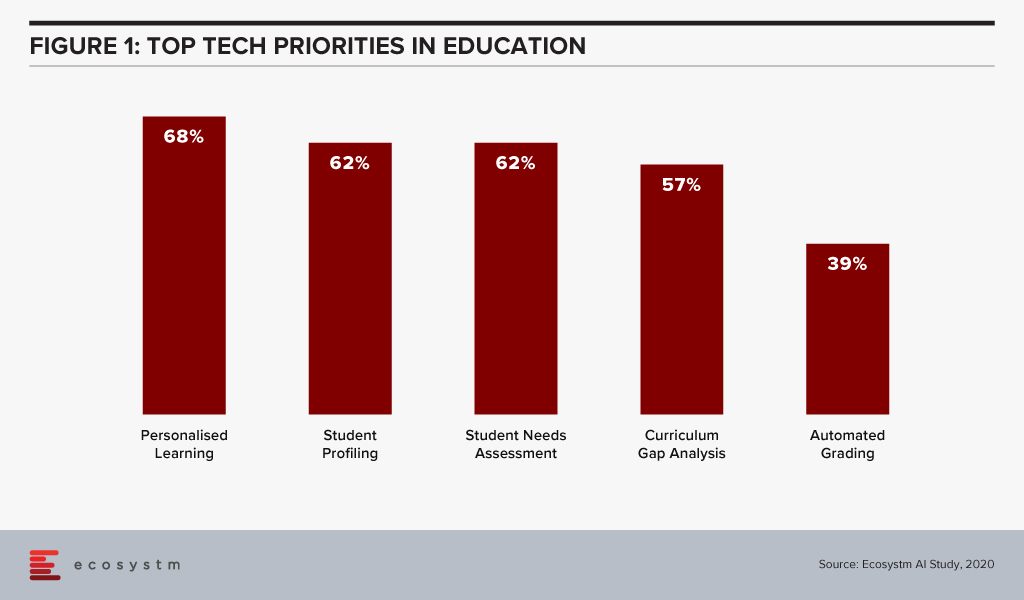
University of Staffordshire Embraces Digital Transformation
The University of Staffordshire is a “connected university” with an emphasis on industry connections and graduate employability. At the heart of Stoke-on-Trent and a regional hub for healthcare education, the university has six schools as well as a well-known degree in computer games design.
The UK-based University has over the years built a reputation for being keen on embracing digital as a way of better management, offering better student services, and serving the larger community. In 2018, Staffordshire University announced plans to build a multi-million-pound apprenticeship hub at its Stoke-on-Trent campus supported by tech giants including Microsoft to equip students with digital skills and to deliver more than 6,500 new apprenticeships over the next decade.
Last year, the University implemented a digital assistant, called Beacon, hosted on Microsoft Azure Cloud that provides support to their students on their learning and on-campus activities, including monitoring their emotional well-being and providing recommendations on groups and societies that they might be interested in. Beacon aims to ease the life of a university student, acting as a digital coach, and to minimise drop-outs due to stress and uncertainty.
Like its peer organisations, in the wake of the pandemic, the university was able to implement a blended learning program – offering courses through digital and remote learning systems from this semester for the entire 2020-21 session.
Focusing on Transformation through Automation
The University of Staffordshire, recently implemented robotic process automation (RPA) as part of its digital transformation plan. Talking about the role of RPA in Education, Dr Fairchild says, “This is a recent trend in higher education, with other new initiatives seen at the University of Auckland and University of Melbourne. RPA as a tool is used in Education to achieve the service levels required to meet both students’ and potential students’ expectations. This includes downloading student applications, processing language waiver requests, and entering academic results. These are all rule-based, high volume applications where automation increases speed and reduces errors.”
The University is using Blue Prism Cloud to access the RPA software and has plans for a automation-led digital transformation roadmap. Dr Fairchild says, “Blue Prism is based on Java and uses a Top-Down approach. It offers a visual designer with no recorders, scripts, or any intervention. Blue Prism is based on process diagrams that utilise core programming concepts and create the operational process flows to analyse, modify and scale business capability.”
The Staffordshire Digital team initially implemented RPA in the Finance department, as it involves a lot of administrative and back-office operations such as management of finance, records, tuition fees details and more. The University’s emphasis is to free up personnel and make them focus on more productive areas. This is beneficial for both the administrative staff’s feeling of personal contribution as well as student service satisfaction levels. “Using RPA gives the opportunity to universities to revisit, redesign, and improve their existing processes in line with expectations from digital native students. For prospective students, the next wave of RPA integration is intelligent machine learning algorithms to help route emails and integrate chatbots to address questions on course selection,” says Dr Fairchild.



